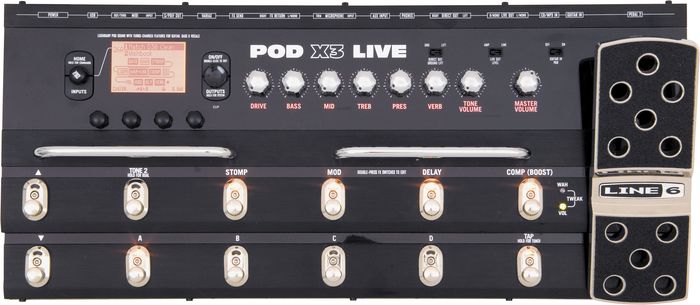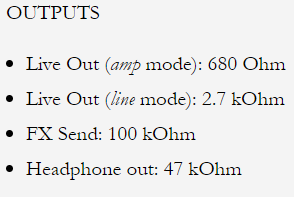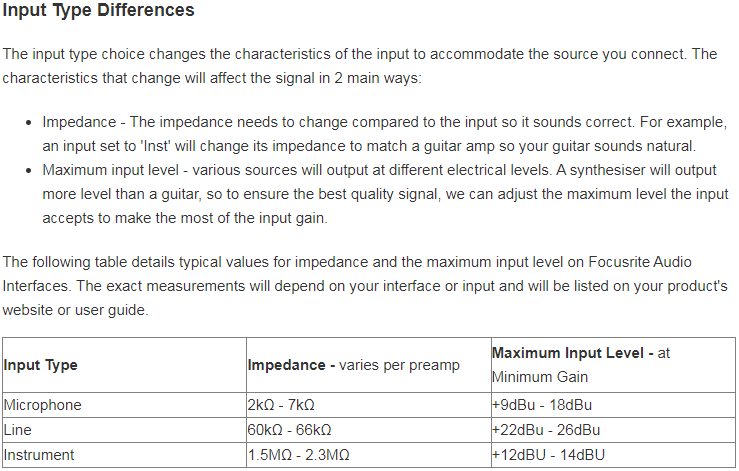
The Line 6 POD X3 is particularly unique, because it allows you to interface extremely easily with a mixing console or recording interface. Consider that most multi-effects only deliver unbalanced outputs, which are designed to connect to a guitar amp, the X3 contains numerous options of both balanced and unbalanced outputs. You can send a full-fledged DI signal to the front-of-house just as if you were running a microphone cable from a real amp. The competing unit of the time, the Boss GT-8, only contains unbalanced outputs which requires an additional spend of $200+ for a DI box that can convert the signal for FOH use.
The POD X3 Live may be old, but it’s still relevant and sounds great. Although you may not find a new one, you can easily pick up a used one for as little as $80. The latest release from Line 6, the Helix, looks great with its neon lights and color screen, but to be honest I didn’t think it was any better than the POD X3 Live, or even the very first POD 2.0 for that matter. I’m open to debate this in the comments. 🙂
One thing that digital effects don’t do well is compensate for problems on the guitar end. Your setup needs to be an immaculate factory default. The newest Helix is no exception. In other words, if your POD doesn’t sound great, the fault may be at the guitar end.
Notice that the X3 provides a multitude of input and output options. The CD/MP3 input was discontinued in the latest Line 6 Helix. Notice that the X3 also contains a microphone input. This, combined with the MP3 input allows the X3 to handle a full mix of guitar, vocals and a backing track. When playing live, and provided that you’re using active speakers, you can skip the hassle of a mixing console altogether. The X3 even has the luxury of accepting audio input from its USB connection, so you can use a smartphone, tablet or laptop to stream your playlist directly to the unit.
When connecting the X3, you need to be aware of a few things. The XLR outputs will always output a balanced signal with cabinet and microphone simulation. This means you can send a signal to the FOH as well as use a guitar amp for on-stage monitoring. The XLR outputs will almost certainly interface correctly with the microphone inputs on a mixing console. On the other hand, my audio interface (Focusrite Saffire Pro) only accepts line and instrument inputs. It’s always a good idea to check impedance matches to ensure you’re outputting the correct signal.
These are the output specifications of the X3 in Ohm’s:
The following is taken from the Focusrite website, and is applicable to my Focusrite Saffire Pro:
My audio interface doesn’t contain a microphone input. It only allows line and instrument level selection. By understanding these values, you can see that along with the X3’s vast output options, its analog outputs actually aren’t ideal for my Saffire. In this case, I need to use the S/PDIF to connect to my interface. This bypasses the analog to digital conversion process, and sends a full-fledged digital signal directly to the DAW. It’s also a great way to experience the stereo capabilities of the X3.



